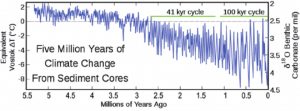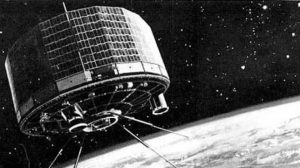TRANSCRIPT
James Lawler: (00:02)
Welcome to Climate Now. I’m James Lawler.
Katherine Gorman:
And I’m Katherine Gorman.
James Lawler:
And you’re listening to our conversation with Professor Kerry Emanual, professor of Atmospheric Science at MIT, where he’s been teaching for 40 years. Professor Emanuel is the author or co-author of over 200 scientific papers and three books. He is co-founder of the MIT Lorenze Center, a climate think tank which fosters creative approaches to learning how climate works. We covered a wide range of topics in our conversation with Professor Emanuel, and the more technical pieces of which you can watch in our video episode about the scientific underpinnings of our confidence in the fact of human-caused climate change. Here, we share the part of our conversation where we focused on how to think about what could be done about it.
Katherine Gorman: (00:53)
Thank you so much professor for joining us today and welcome to Climate Now. Tell us a little bit about your background. How did you get where you are today?
Professor Emanuel: (01:02)
I got into this field mostly through my interest in atmospheric science and weather. And in fact, I specialize in the meteorology of the tropics with a focus on hurricanes and a lot of my published papers in the last two decades or so have been on hurricanes. But I’m also extremely interested in climate and have been for a while. And I’ve taught a graduate course in climate physics now for about 20 years.
James Lawler: (01:28)
I’m going to dive into my first question, which is what is humanity’s best shot at avoiding the worst effects of climate change?
Professor Emanuel: (01:34)
Well, so most of the experts that I’m fortunate enough to be able to talk to at MIT and other places say that there isn’t a magic bullet, but there is a magic combination and it’s going to be multiple things. And what are those things? Well, in the broadest sense, we have to do two things. We have to stop emitting carbon, or at least slow it down. And maybe we can develop ways of taking carbon that’s already in the atmosphere out. Okay. Carbon capture, it’s called. Now we know how to carbon capture chemically. It’s just too expensive at the moment, but there’s some hope that if we keep working on that technology, we can drive it down. So that’s one thing. It’s not a magic bullet, but it would help. The other are, well, conservation. Just not produce so much carbon.
Professor Emanuel: (02:27)
I tend to think that the emphasis on that is very strongly misplaced and the reason I think so, and a lot of experts say… no matter what the US and the developed world does, the big deal is the hope for economic expansion of horribly poor places, like much of India and central Africa and so forth. And if they’re going to grow their economies and address poverty, which we all hope they will, it’s going to be accompanied by big, big increases in per capita energy consumption. We want that. We want that. Not because we want the carbon that goes with it, but because we want the alleviation of poverty. It’s not the only problem in the world. Okay. That’s probably going to happen and even if we wanted to stop it, we couldn’t. And that just swamps what we can… I’m very conservative in that sense.
Professor Emanuel: (03:21)
I’ve got solar panels on my roof and I don’t like to waste things, but it isn’t really going to address the problem. So what we really need to do is come up with low carbon energy. Now this is a complex landscape, but so far the most effective, by far, ways that countries have decarbonized, at least their electricity, is by combinations of renewable, especially hydro power and nuclear power, nuclear being a very important element to that. And nuclear energy is statistically in terms of lives lost and mining and whatever, accidents, nuclear power is per kilowatt generated far in away the safest energy source we’ve had. It’s got a bad rap from mostly environmentalists. And I’m trying to persuade them that this is really hurting our efforts to decarbonize. We really have to step up nuclear. And I just published an essay in the bridge, which is a journal of the national academy of engineering called nuclear salvation.
Professor Emanuel: (04:27)
Just the title tells you where I’m headed that way. We’ve got to set aside our disinformation about nuclear power and really go to town, we don’t have to build sixties style nuclear power plants to do that. Nuclear combined with renewables is a winning mix for that. One thing people have to be aware of is that a lot of energy that we’re using today, that involves a lot of carbon emissions, have nothing to do with electricity. It’s industrial heat to make steel and such things. You need very high temperature that can’t be economically supplied by any electrical source. And where is that heat going to come from? If it’s coming from fossil fuels, we’re not going to get anywhere, but nuclear can do that. Okay. And that’s one thing renewables cannot do, or at least to not do it anywhere near efficiently. And the other of course, the other thing we have to work on and are working on is storage, the thing that’s limiting renewables now is not solar panels or wind turbines.
Professor Emanuel: (05:27)
They’re very cheap and being produced all over the place, it’s the inability to store power inexpensively from when you can generate it to when you need to use it. So all of those things, we can’t put our eggs in one basket. We’ve got to work on all of this together and it’s going to be some combination and the combination will differ from one place to another. But if we do this in combination, I think there’s no question we could solve this. And we could solve it, I estimate in the essay for less than 1% of world domestic product.
James Lawler: (06:03)
Electrifying transportation will likely be a very big part of that combination. Where do you see the future of transportation?
Professor Emanuel: (06:09)
I’m extremely optimistic about electrifying vehicles and the reason I’m optimistic is I think that would happen if we had no problem with the climate at all, because the electric motor is an immensely more beautiful piece of machinery than a gas motor. It has essentially one moving part. If you buy an electric car today, a Tesla or a Leaf or something, you will open up the owner’s manual, and they don’t tell you to look at the engine as a matter of regular maintenance until 125,000 miles have gone by. So no more visits to the… expensive visits and they accelerate fast. They’re quiet. It’s just a no brainer. I’m very upbeat about electrification, but it won’t do any good if all the electricity’s coming from fossil fuels. So that’s why it’s still very important, not just to electrify existing… decarbonize existing sources of electricity, but to be prepared for a big ramp up in the demand for strictly electrical energy, which can be met by renewables and by nuclear power, those two in combination.
James Lawler: (07:23)
So given the challenge of moving to zero carbon energy, in particular this massive challenge of these large scale trends and improvements in standards of living in developing countries which come with growing per capita emissions, what are the fundamental reasons, if there are any, for optimism?
Professor Emanuel: (07:40)
The reason I’m optimistic is that in the past, when we’ve seen major transformations like from horses and buggies to cars, then to machinery and industrial processes and so forth, wise people have looked at this as an enormous opportunity. And so there’s no doubt in the minds of serious people, creative people, inventors and so forth, that we can come up with ways of taking carbon out of the atmosphere. We can come up with carbon free energy sources. This is an enormous market for that. It sounds a bit crass and a bit Machiavellian, but the global energy market today is $7 trillion, right? So a third of US GDP, it’s a huge number. The nations, the individuals that can capture that market are going to do well. Right now, Russia and China are competing to be those nations, and the US is hardly in the competition at all.
Professor Emanuel: (08:45)
Russia and China. China is the largest builder of wind turbines, producer of solar, PV, and Russia and China are competing for the nuclear export market. And this is something people don’t really seem to know about is that regardless of all our environmental movements in the west, Argentina, other countries in the middle east are buying nuclear power plants from Russia or China, because it makes sense. They’re hedging against the idea that they might get taxed for carbon or that carbon may become unavailable for some reason. And they’re going with that, and they’re not going to be influenced by Western environmentalists necessarily. They’re going to go forward. So why are they capturing that market? The choice for people who don’t like nuclear is not whether there will be nuclear. There will. It’s whether it’s going to be Russian plants. These are the folks that brought us Chernobyl.
Professor Emanuel: (09:40)
The one accident whose radiation actually killed people in the nuclear power industry, or whether it’s going to be ours or France’s or Sweden’s or something. That’s the real world’s choice we have. So I’m optimistic. And, you know, if you’re the leader of a rapidly developing or country poised to be rapidly developing like India, and you’re looking at the fact that you’re going to need an enormous ramping up of power, not just for electricity, industrial, you’re going to be looking across the whole board, right? And if you have to pay a little bit more for non-carbon, you might be willing to, for one reason, and it has nothing to do with climate. It’s health, the health costs of carbon conduct combustion, particularly the health costs that arise from particulates are absolutely staggering. And the economic activity loss by premature illness and deaths from this is very, very large. So that’s a hidden cost. It’s a cost born by the healthcare sector, if you will, but it is a real cost for carbon combustion. And wise leaders know that and are willing to pay more, having nothing to do with climate, this is another incentive to develop low carbon energy sources, even independent of climate change.
Katherine Gorman: (11:00)
I’m very curious about that point as foreign leaders look to sources of energy that will be opting away from carbon for those health reasons, et cetera. And I’m wondering, are those decisions made for the most part rationally, in your view? Are we seeing that rational process play out the way that you’re describing it? I know we should be seeing it as that because it makes rational sense, but do we in fact see that?
Professor Emanuel: (11:25)
It’s two steps forward and one step back, I mean, there’s net progress, I think. There’s net rational behavior in the long run, but there are mistakes made along the way, for sure. Okay. No question about it. But I think that the net trend is upward and there’s a lot of rhetoric, a lot of noise about the Paris Accords, and it’s all for the good, in the sense that there’s this sort of growing social pressure out there. And that does mean something to get people away from carbon. So if you have got a decision that’s close between whether you’re going to build a coal fired power plant, a dam, a wind farm, or a nuclear power plant, that social pressure will weigh into the decision. It may not be the most important thing, but if it’s economically close, it will sway things. Particularly if you understand the health costs of things like coal combustion. You know India, it’s a country already struggling with enormous air pollution problems that result from not just industrial activity, but ordinary stoves that people have in their houses that are burning wood or something else.
Professor Emanuel: (12:38)
So there are a lot of incentives to go away from that. But I think in the long run, it will be rational. The most effective thing that we in the west can do, I think, is to innovate energy and for the government and academic institutions, laboratories to put lots of energy into energy. That is lots of resources to get young people excited about innovating because there are a lot of ways we can go. And if we tell ourselves false narratives, which seems to be very popular these days, in many fronts, that, oh, it’s all going to be solved by solar. We already have it. Just sit back and agitate politically for that or wind or something. They don’t really get real about it. And look at the alternatives and weigh them rationally. We’re not going to get anywhere. Nevertheless, things will go forward if for no other reason that China and Russia are moving forward and South Korea, a bunch of other places. It’s a little bit sad as an American citizen to see my own country kind of sitting on the sidelines, but we still have an edge. I think innovation if only we would encourage it and nurture it along.
James Lawler: (13:55)
Well thank you so much Professor Emanuelfor, for being on the podcast, great to have you.
Professor Emanuel:
That was a great pleasure. Thank you very much.
James Lawler:
For more of our conversation with Professor Emanuel, visit climatenow.com and watch our video, “How we know it’s happening,” the scientific underpinnings of our confidence in human caused climate change. On climate now.com you can also subscribe to our weekly newsletter and podcasts with climate and energy experts and watch other videos where we distill the key principles of climate and energy science to make sense of human caused climate change and the path toward a zero carbon future. Thanks so much for listening.





